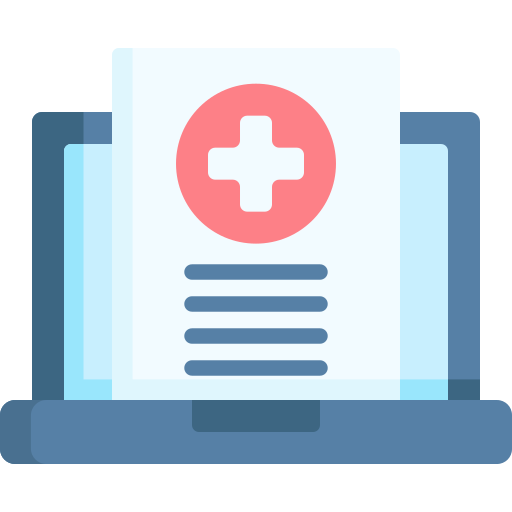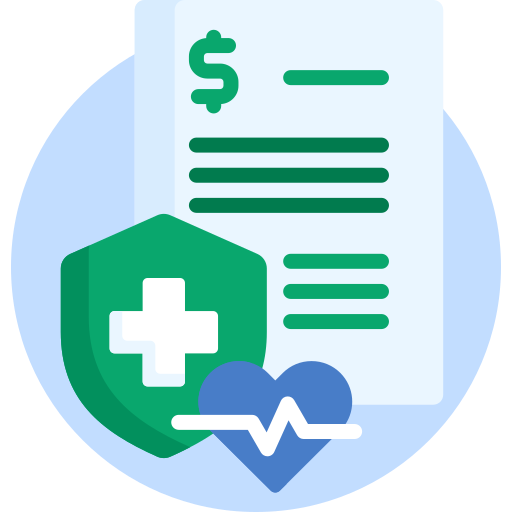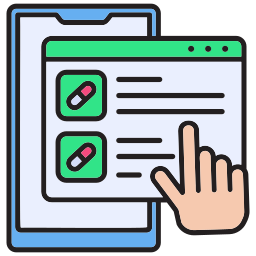Disconnected systems don’t just slow you down—they put patients at risk. Every delay, duplicate test, or missing record chips away at care quality and trust. In an industry where every second counts, lack of interoperability isn’t just a tech flaw—it’s a liability.
That’s exactly what the Trusted Exchange Framework and Common Agreement (TEFCA) is here to fix. Backed by the Office of the National Coordinator (ONC) and led by The Sequoia Project, TEFCA lays down a single, unified playbook for health data exchange—making it easier for providers, payers, and public health systems to finally connect, share, and act on data without friction.
FHIR is being adopted as the new standard for health data exchange to support this shift. FHIR uses modern web technologies to make health data accessible through APIs, enabling real-time data sharing, app development, and smoother integrations.
The TEFCA FHIR Roadmap outlines how FHIR will be phased into the TEFCA framework over the next few years. With pilots for QHIN-to-QHIN FHIR exchange set to begin in 2025, this roadmap marks a key shift toward more connected, patient-centered care.
Understanding TEFCA and FHIR
What is TEFCA?
TEFCA was introduced by the Office of the National Coordinator for Health IT (ONC) to simplify and unify how health information is exchanged across the United States. Its goal is to enable nationwide interoperability by creating a shared framework that connects QHINs, who in turn connect healthcare providers, payers, and public health entities.
Instead of having every hospital or vendor create rules for exchanging data, TEFCA defines a common set of technical standards, legal agreements, and exchange purposes—including Treatment, Payment, Health Care Operations, Public Health, and Individual Access Services. This creates a "network of networks" that can scale securely and consistently across states and organizations.
What is FHIR?
FHIR is a data standard developed by HL7 for healthcare data exchange. Unlike older formats like HL7 v2 or C-CDA, FHIR is built with modern web standards like RESTful APIs and JSON, making it more compatible with today’s technology stacks.
FHIR is designed for real-time interactions and can support a wide range of applications—from mobile health apps and EHR integrations to patient portals. Its modular resource-based architecture enables more granular, flexible, and faster data exchange than legacy formats.
Related Read: FHIR Adoption in Healthcare
Why TEFCA Needs FHIR?
While TEFCA already enables nationwide data sharing, its original framework relied heavily on document-based exchange formats like C-CDA. To make that exchange more scalable, real-time, and API-driven, integrating FHIR becomes essential.
Example: Current QHINs and Their FHIR Readiness
The following organizations have been designated as QHINs and are preparing for FHIR integration as part of TEFCA's roadmap:
- CommonWell Health Alliance
- eHealth Exchange
- Epic TEFCA Interoperability Services
- Oracle Health (Cerner)
- Health Gorilla
- Kno2
- MedAllies
- KONZA
These QHINs are expected to support FHIR-based exchange in pilot environments starting in 2025, progressing toward full implementation by 2027.
Related Read: Getting Your Architecture FHIR Ready: A Step-by-Step Guide
The TEFCA FHIR Roadmap
TEFCA lays out a clear path to integrate FHIR-based exchange into the TEFCA network. It’s designed to align the healthcare ecosystem with modern API-driven interoperability while maintaining scalability, security, and real-world usability. The roadmap spans three years, gradually expanding the role of FHIR across QHINs to support nationwide interoperability.


The roadmap breaks down FHIR integration into four key stages, each building toward complete, end-to-end FHIR exchange across the TEFCA framework:
Stage 1: FHIR Content Support
In this initial phase, FHIR exchange is enabled within individual QHIN networks. It supports document-based exchange using IHE profiles to move FHIR payloads between QHINs through coordinated “out-of-band” arrangements. This stage builds on current network capabilities, setting the groundwork for API-based interoperability.
Stage 2: QHIN-Facilitated FHIR Exchange
This stage moves beyond point-to-point coordination. It requires QHINs to support the facilitated FHIR API exchange. Participants and subparticipants within a QHIN can now share data consistently and securely through FHIR APIs. This is an important step in making FHIR exchange a formal and supported mode under TEFCA’s policies.
Stage 3: QHIN-to-QHIN FHIR Exchange
At this stage, FHIR API-based exchange expands across QHINs. Different QHINs must now enable direct FHIR exchange between one another, aligning with TEFCA’s goal of creating a plug-and-play national data exchange infrastructure. According to the roadmap, pilot programs for this phase are expected to begin in 2025, providing real-world testing and refinement before national rollout.
Stage 4: End-to-End FHIR Exchange
The final stage aims to achieve true end-to-end FHIR exchange—across participants and subparticipants in different QHINs. This is where TEFCA’s long-term vision comes to life: a future where data moves securely and instantly across systems, organizations, and care settings, all through FHIR-based APIs. It represents full adoption of modern interoperability for the U.S. healthcare system. This milestone is currently planned for 2026/2027, marking the anticipated culmination of TEFCA's phased implementation strategy.
Implications for Healthcare Interoperability
The staged implementation of FHIR within TEFCA is designed to gradually shift the healthcare ecosystem toward real-time, API-driven data exchange. It starts with optional FHIR exchange within individual QHIN networks (Stage 1), moves to network-facilitated exchange (Stage 2), and eventually mandates QHIN-brokered FHIR exchange across networks (Stage 3). This phased approach gives healthcare organizations time to prepare while aligning with technical standards and policy updates.
What does this mean for data sharing across the U.S?
As FHIR becomes a required part of the TEFCA framework, data sharing between healthcare entities will get faster, smarter, and more secure. Instead of relying solely on document-based formats like C-CDA, FHIR enables granular access to specific data points—lab results, medications, and care plans—via standardized APIs. This helps eliminate silos, reduces redundancy, and supports more dynamic use cases like decision support tools, care gap analysis, and automated quality reporting.
What’s in it for patients?
For patients, the TEFCA FHIR Roadmap brings a major upgrade to how and when they access their health information. With FHIR APIs in place, patients can connect apps and services that provide a holistic view of their medical history—regardless of where they received care. This is expected to improve care coordination across providers and empower individuals to take more control over their health.
Key challenges for healthcare Providers
While the roadmap outlines a clear path, the transition won’t be without hurdles. Organizations must ensure compliance with TEFCA policies, adopt UDAP-based security protocols and build or integrate FHIR servers that support TEFCA’s authentication and authorization standards. There’s also the operational lift of testing, onboarding, and aligning data governance models to fit TEFCA requirements.
The upside? Once FHIR exchange becomes the norm, interoperability won't be an add-on—it’ll be the foundation.
Complete our step-by-step checklist and receive a personalized action plan.
Current Progress and Future Outlook
Where Does TEFCA and FHIR Stand Today?
TEFCA has officially entered the implementation phase. QHINs have already been designated by the Office of the National Coordinator (ONC) and the Recognized Coordinating Entity (RCE). These QHINs are now setting up the foundational exchange capabilities like C-CDA-based document exchange, patient discovery, and directory services. The goal is to create a standardized backbone for nationwide data sharing.
Meanwhile, FHIR adoption is growing across the U.S. healthcare system, especially for use cases like patient access, payer-to-payer exchange, and clinical decision support. Within TEFCA, FHIR is not yet the required exchange method—but that’s about to change.
QHIN-to-QHIN FHIR Exchange Pilots in 2025
The TEFCA FHIR Roadmap lays out a staged plan to integrate FHIR into TEFCA. In 2025, TEFCA will begin piloting FHIR-based QHIN-to-QHIN exchange, marking a major turning point. Stage 2: Network-Facilitated FHIR Exchange allows QHINs to support FHIR-based transactions in parallel with existing methods, optionally.
The pilot phase will test:
🔹 Real-world FHIR API use between QHINs
🔹 Use of UDAP (User-Managed Access Protocol) for dynamic client registration and secure authentication
🔹 Implementation of FHIR data requests following the US Core Implementation Guide
These pilots will help iron out the technical, policy, and identity-management challenges of scaled FHIR exchange.
Looking Ahead: Full FHIR Integration
Following successful pilots, TEFCA aims to make FHIR-based exchange a requirement, not just an option. This next phase, Stage 3: Network-Brokered FHIR Exchange, will introduce mandated FHIR APIs for all QHINs, ensuring standardized, scalable, and API-native interoperability across the U.S.
Future milestones include:
🔹 Finalizing Standard Operating Procedures (SOPs) for treatment, individual access, and public health use cases
🔹 Rolling out updated security protocols and consent models that align with modern API standards
🔹 Supporting bulk FHIR data exchange and broader ecosystem integration
The TEFCA FHIR Roadmap reflects a deliberate, phased path to nationwide FHIR adoption—moving from optional use to default infrastructure for health data exchange in the United States.
Conclusion
Mindbowser stands ready to support healthcare providers as they navigate the transition to TEFCA-compliant systems. From Pre-Visit Checklists and Audit & Gap Analysis to Connectivity Checks and Security Standards Implementation, our end-to-end services are designed to simplify your compliance journey.
We help integrate healthcare systems, automate reminders aligned with USCDI standards, and build FHIR-ready APIs for secure data exchange across QHINs. Our team also assists in setting up patient management workflows, data-sharing policies, and incident response plans, ensuring you’re not just compliant but future-ready.
With a focus on intuitive UI/UX design, we enable real-time data requests and external record search, improving clinician and patient experience alike. And our commitment doesn’t stop post-deployment—we offer ongoing support to keep your organization up to date with evolving regulations.
The TEFCA FHIR Roadmap presents a new era in interoperability. Partner with Mindbowser to stay ahead of regulatory deadlines, simplify your health data infrastructure, and build a foundation for secure, efficient, and value-driven care.
- Does TEFCA use FHIR?
Yes, TEFCA is adopting FHIR as part of its roadmap. While initial data exchange under TEFCA used older formats like C-CDA, FHIR-based exchange is being phased in, with QHIN-to-QHIN pilots planned for 2025.
- What is the difference between TEFCA and QHIN?
TEFCA is a federal framework that sets the rules and standards for nationwide health data exchange. QHINs (Qualified Health Information Networks) are the certified networks that connect under TEFCA to exchange health information.
- Has FHIR replaced HL7?
Not entirely. HL7 develops FHIR and is the latest standard for health data exchange. It is gradually replacing older HL7 v2 and CDA formats in many systems, but all formats still coexist depending on use cases.
- Why is FHIR better than HL7?
FHIR uses modern web technologies like RESTful APIs and JSON, making it faster, easier to implement, and more suited for mobile apps and cloud platforms. It offers better scalability and interoperability than older HL7 standards.
- When is Stage 4 of TEFCA expected to be implemented, and what does it signify?
Stage 4 is projected for implementation in 2026 or 2027. It represents the culmination of TEFCA’s phased strategy, enabling real-time, secure exchange of health data nationwide using FHIR-based APIs, ultimately achieving a modernized U.S. healthcare interoperability framework.

Pravin Uttarwar, CTO of Mindbowser
As the CTO of Mindbowser, a healthcare-focused software development company, I am dedicated to delivering cutting-edge digital solutions that transform patient care and operational efficiency. With over 16 years of experience and as an MIT alumnus, I specialize in healthcare interoperability, FHIR-compliant systems, and AI-powered platforms, crafting scalable products and architectures tailored to the unique needs of healthcare providers and enterprises.
I have spearheaded the development of over 100 products and platforms, guiding them from concept to full-fledged solutions. My expertise extends to scaling remote tech teams, driving EHR integrations, and building secure, cloud-native healthcare solutions. By shaping technology visions and roadmaps, I help clients achieve long-term growth and success in the rapidly evolving healthcare landscape.
HealthConnect CoPilot enabled us to access real-time patient health data through integration with Apple HealthKit, enhancing care delivery while maintaining HIPAA compliance. This led to personalized care and improved outcomes for patients.

AI-enhanced Obstetrics Clinical Decision Support Platform
HealthConnect CoPilot's integration with Epic's Hyperspace has transformed our workflow. Automated post-delivery examinations and HL7 protocol use ensure accurate updates to Epic. Their expertise empowers informed decision-making in childbirth

Top Provider for Customized Healthcare Solutions
HealthConnect CoPilot's helped us to integrate with leading tracking devices such as Apple Watches and Fitbit. This integration enables effortless syncing of health data, providing users with real-time insights displayed directly on our flagship products: smart mirrors and digital calendars.

A Provider of Customizable Display Solutions
Post a comment Cancel reply
Related Posts
Navigating the Future of Healthcare Integration with SMART on FHIR Apps
SMART on FHIR enables apps to plug directly into EHR systems like Epic EHR, Cerner…
TEFCA in Healthcare: A Complete Guide
Healthcare has long struggled with fragmented data systems. Patient records are often locked within isolated…
Model Context Protocol (MCP): Revolutionizing Healthcare Chatbots with FHIR Integration
Healthcare technology is experiencing a paradigm shift with the emergence of Anthropic’s Model Context Protocol…
Healthcare Integration: The Understanding & Its Impact in Healthcare
Healthcare integration refers to connecting various systems, applications, and data sources within the healthcare ecosystem…
Value-based Care vs Fee-for-Service
Healthcare payment systems can feel a bit like deciding between paying for each item on…
Checklist for EHR Integration in the Healthcare System
EHR integration in the healthcare system refers to the seamless connection of EHR systems with…









